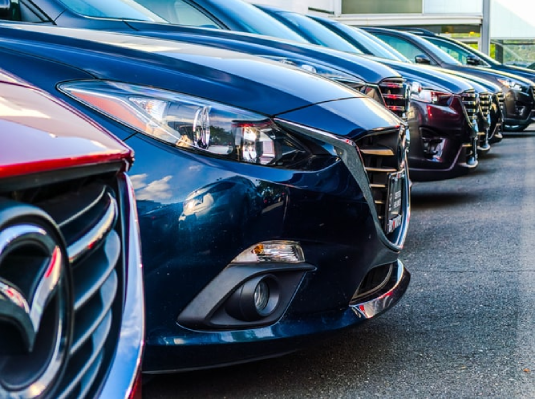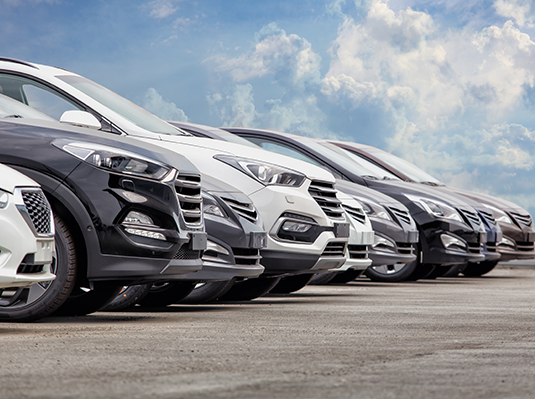
You bought a new car — congratulations! Now your bank says you need a full coverage auto insurance policy to protect it, but what does that mean, exactly? Full coverage auto insurance is a term generally used to describe a combination of coverages (liability, comprehensive, and collision) that protect you and your vehicle in the event of an accident or other emergency.
What is the difference between full coverage and liability?
Full coverage describes multiple types of insurance all combined into one policy designed to protect you and your vehicle. Liability insurance is only one part of a full coverage insurance policy.
Liability insurance is the portion of your coverage that pays for injuries and damages you cause in an at-fault accident. If you hit someone else and they need to repair their car or seek medical attention, your liability coverage is what pays for those expenses.
Liability insurance does not pay for any damage to your own vehicle or any medical expenses you may have if you are in an accident, no matter which driver was responsible for the damage. There are other coverages you can purchase that can help protect you and your vehicle, such as uninsured or underinsured motorist coverage, personal injury protection, or med pay, but they are typically not considered part of your liability coverage.
Unlike comprehensive and collision coverage, liability insurance is required by law in almost every state.
What is the difference between full coverage and collision?
Collision coverage is the portion of your full coverage policy that pays for damage to your car when you are at fault in an accident, whether or not that accident involved another vehicle. Collision coverage includes:
- Accidents with other cars, trucks, motorcycles, RVs, etc.
- Hitting a stationary object, such as a tree or a pole
- Damage caused by hitting a pothole
- Tipping or rolling your vehicle
- Property damage caused by a hit-and-run accident
What is the difference between full coverage and comprehensive?
Comprehensive coverage is the portion of your insurance policy that covers non-accident damages to your car, including:
- Theft
- Vandalism
- Fire, riots, and explosions
- Falling objects, such as trees or tree limbs
- Items kicked up by/falling off of other cars, such as rocks
- Hail, wind, floods, lightning, and other storm damage
- Hitting an animal with your car
What is a glass deductible?
Comprehensive and collision coverage both come with deductibles, but insurance companies in many states require you to have a separate, lower deductible for glass damage. Florida, Kentucky, and South Carolina require insurance companies to waive the deductible for windshield damage because driving with a damaged windshield can be dangerous. This is to encourage people to get their windshield repaired right away instead of leaving it damaged.
Insurance companies in some states allow you to “buy down” or “buy back” your glass deductible, which means they allow you to reduce your deductible for glass repairs if they go beyond your comprehensive deductible amount. This is highly dependent on your location, so contact our experts at Goosehead Insurance for more information about your specific coverage.
Does full coverage insurance cover at-fault accidents?
Full coverage insurance covers at-fault accidents. If you hit another car on the highway or run into a guardrail, your collision coverage will pay for the damages to your vehicle and your liability coverage will pay for the damages you caused in the accident.
The only time full coverage insurance might not pay for damages in an at-fault accident is if the insurance company or the court system determines that the accident was intentional on your part. If you purposely hit someone or something with your car, those damages will not be covered by insurance.
Should I carry full coverage on a paid off car?
It is tempting to switch to a liability only policy as soon as your car payments are complete, but you should carry full coverage on any vehicle you cannot afford to replace out-of-pocket in the event of a total loss. If the value of your car is high enough that it would be a financial hardship for you to replace it, carrying full coverage is likely your best option.
There are occasions when it makes sense to switch to a liability only policy, such as:
- Reduced use: If your car is paid off and you rarely use it, liability only coverage might be a good way to reduce expenses without much of an increased risk.
- Reduced value: If your car isn’t worth much and you can afford to replace it in the event of an accident, you might be better off switching to liability only coverage.
Is it possible to get cheap full coverage auto insurance?
There are several ways to save money on full coverage insurance, including:
- Compare quotes: Get quotes from multiple companies to make sure you are getting the lowest rate. Our experts at Goosehead Insurance can help you compare policies to make sure you are getting the best coverage for your situation.
- Keep your driving record clean: Avoid accidents and tickets to keep your insurance rates as low as possible.
- Discounts: Take advantage of any discounts that are available to you, such as good student discounts, policy bundling discounts, etc.
The contents of this article are for informational purposes only. You should not act or refrain from acting based on this information without first consulting a Goosehead licensed agent at [email protected]. We disclaim all liability for actions taken or not taken by you based on the contents of this article which is provided "as is." Goosehead makes no representation that this content is error-free.
.png?width=535&height=399&ext=.png)

